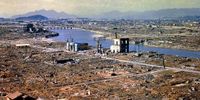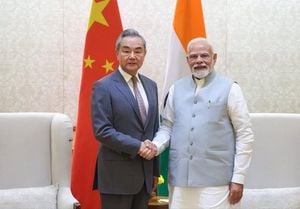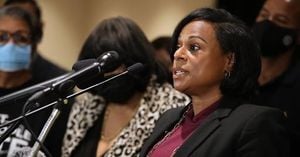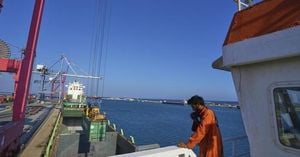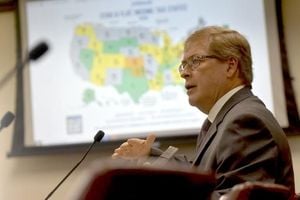Eighty years ago, the world crossed a threshold that would forever alter the course of history. On August 6, 1945, the city of Hiroshima vanished in a blinding flash, followed three days later by the destruction of Nagasaki. These first atomic bombings did not just end a war—they sparked a nuclear age that has haunted global politics, science, and public consciousness ever since. As the world marks the 80th anniversaries of these bombings, a wave of reflection and renewed anxiety about nuclear weapons is sweeping across policy circles and the public alike, prompted by recent military actions, ongoing modernization efforts, and the sobering lessons of history.
According to a five-part opinion series, The Next Nuclear Age, published by the Federation of American Scientists (FAS) in partnership with the Washington Post on August 8, 2025, the threat posed by nuclear weapons is anything but a relic of the past. The series traces the arc of nuclear policy from the Trinity Test in the Jornada Del Muerto desert 80 years ago to today’s tense multipolar world, where roughly 2,000 nuclear weapons remain on high alert—far more powerful than the original bombs that devastated Japan. The authors warn, “It is as if the lessons of the Cold War — that there is never a finish line to the arms race and that more effective nuclear weapons do not lead to stability and security — have been forgotten by the current generation of defense planners.”
This warning echoes the prescient voices of the Manhattan Project scientists, who, months before Hiroshima, urged President Harry Truman to pursue international controls over nuclear arms. Their 1945 report predicted, “A race of nuclear armaments is certain to ensue following the first revelation of our possession of nuclear weapons to the world. Within 10 years other countries may have nuclear bombs, each of which, weighing less than a ton, could destroy an urban area of more than five square miles.” That prediction proved chillingly accurate. By 1949, the Soviet Union had joined the United States as a nuclear power, and the arms race was off to what these scientists called a “flying start.”
The FAS series and other recent reflections, such as an August 9, 2025 essay published on the 80th anniversary of Nagasaki’s bombing, highlight how the initial scientific warnings shaped early policy. After the war, President Truman declared, “The hope of civilization lies in international arrangements looking, if possible, to the renunciation of the use and development of the atomic bomb.” In November 1945, the United States, Britain, and Canada jointly proposed eliminating all atomic weapons and placing nuclear technology under strict international control. But Cold War tensions quickly derailed these efforts. By the late 1940s, the United States and Soviet Union were locked in a race for nuclear superiority, each viewing atomic arsenals as the ultimate guarantor of security and national prestige.
Fast forward to today, and the world’s nuclear landscape has only grown more complex. There are now nine nuclear-armed states, collectively holding some 12,000 nuclear weapons. The United States alone possesses more than 5,000, more than any nation except Russia. Despite decades of arms control agreements and reductions, the trend has reversed: “We are now in a period where all nine nuclear weapon states are building new nuclear weapons, some increasing their arsenals,” said Joseph Cirincione, former president of Ploughshares Fund, in a recent interview with the Canadian Broadcasting Corporation. He added, “Most experts believe that the risk of nuclear use is rising and in some cases rising dramatically.”
What happened to the momentum for disarmament? The FAS series and Cirincione both point to a confluence of factors. The end of the Cold War lulled the public into a sense that the nuclear threat had receded. “Stockpiles have been reduced from Cold War highs but the thousands of remaining weapons could still destroy humanity,” the FAS notes. Meanwhile, arms control advocates ran up against entrenched bureaucratic and industrial interests. Cirincione observed, “People make a lot of money building nuclear weapons. These are not just terrible weapons; they are also a product that can generate huge profits for companies.”
At the same time, new geopolitical tensions have eroded confidence in the old nonproliferation regime. The U.S.-Russia-China nuclear triangle, once described as a ‘three body problem,’ now seems almost quaint in a world where regional powers and even close U.S. allies are reconsidering their own nuclear options. The FAS warns, “With or without Iran, the number of nuclear states could double, raising the risk of catastrophe.” Recent U.S. military strikes targeting Iran’s nuclear program, as reported by both FAS and Cirincione in interviews, illustrate how the debate over nuclear proliferation has shifted from theory to real-world crisis management.
The mechanics of nuclear decision-making remain as sobering as ever. The FAS series points out that the President of the United States retains sole authority to order a nuclear strike, even if every adviser in the room is against it. This authority, codified in law and tradition, means that “the start of nuclear war, the probable deaths of millions and the choice of which cities to decimate — the black book distills these realities into a sanitized list of options that a former military aide to President Bill Clinton likened to a ‘Denny’s breakfast menu.’” As the series details, the decision window in a crisis could be just minutes, with the defense secretary urging, “Make a decision in the next two minutes or risk losing the ability to retaliate.”
Efforts to reduce these risks have faltered. Early hopes for international control of atomic energy were dashed by Cold War rivalry. Later, bipartisan campaigns—such as those led by former Secretaries of State William Perry and George Schultz, and organizations like the International Campaign to Abolish Nuclear Weapons (ICAN)—called for deep cuts and eventual elimination of nuclear arsenals. Yet, as Cirincione notes, “They all failed. Absent a determined public effort to move towards their elimination, those forces in favor of more weapons prevail.”
Modernization continues apace. The United States is in the midst of a two trillion dollar overhaul of its nuclear triad, including new warheads, missiles, and delivery systems like the Sentinel intercontinental ballistic missile, which recently overcame cost and schedule overruns to move forward. Other nations are following suit, raising the specter of a new arms race even as disinformation and mistrust batter the international order.
Why, then, has public activism faded? Cirincione suggests, “Most stopped thinking that this was a major problem. They thought it was solved. There are so many other pressing problems, like the climate crisis, that seem to take precedence.” Yet, he argues, economic realities may soon force a reckoning: “You want to increase healthcare? You want to increase education? Where are you going to get the money? Well, I’ve got a $100 billion a year nuclear weapons program that could provide a big source of that funding.”
The lessons of the past are clear. As the FAS concludes, “After decades of work trying to reduce the threat of nuclear weapons, our days ahead look riskier than in years prior.” The threat of nuclear catastrophe, once a defining fear of the Cold War, has not vanished. Instead, it lurks in the background, ready to reemerge in a world where old norms are collapsing and new dangers multiply. As the world reflects on eight decades since Hiroshima and Nagasaki, the challenge remains: to prevent the unthinkable before it becomes inevitable.
